Hebrew: כלך מצוי, Arabic: الكلخ الشائع
| Scientific name: | Ferula communis L. | |
| Common name: | Common Giant Fennel | |
| Hebrew name: | כלך מצוי, kelech mazui | |
| Arabic name: | الكلخ الشائع | |
| Family: | Umbelliferae / Apiaceae, סוככיים |
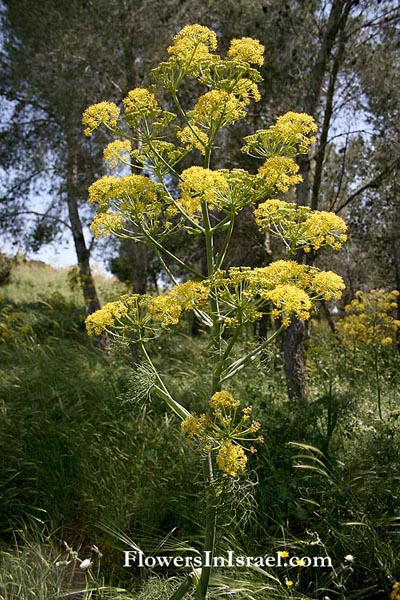
|
| Life form: | Hemicryptophyte | |
| Stems: | Up to 200 cm; very robust stem, 3-7 cm in diameter, green, jointed, hollow stalks, branched, finely striated | |
| Leaves: | Alternate, rosette, dissected, bipinate or more | |
| Inflorescence: | Umbelliform cyme | |
| Flowers: | Yellow; 5 petals | |
| Fruits / pods: | Achene; mericarp, elliptical or oblong-elliptical, strongly compressed dorsally; 7-15 mm long | |
| Flowering Period: | March, April, May | |
| Habitat: | Batha, Phrygana | |
| Distribution: | Mediterranean Woodlands and Shrublands, Semi-steppe shrublands, Shrub-steppes | |
| Chorotype: | Mediterranean | |
| Summer shedding: | Ephemeral |
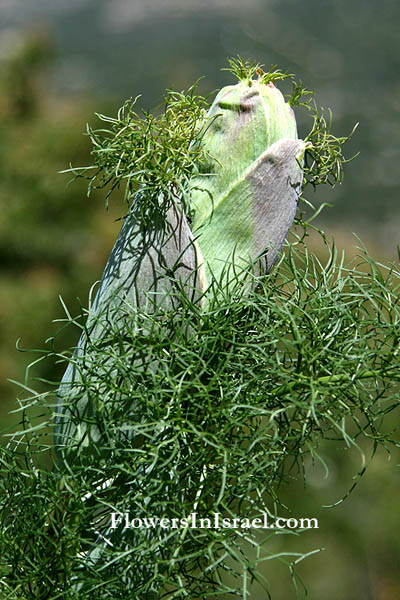
Derivation of the botanical name: Ferula, the Latin name for “walking stick,” Giant Fennel (whose stalks were once used in punishing children.), from ferire (“to strike”). The Giant fennel has tall sticklike stems. communis, common. The Hebrew name כלך, kelech mentioned in the Old Testament, in the context that its stem was used as a walking stick. Ferula communis appears to be the narthex of antiquity, narthex (from Ancient Greek νάρθηξ (nárthēx, “giant fennel, scourge")). The Roman poet Marcus Valerius Martialis ( c. AD 40-103/4), or Martial, referred to the stem of the Ferula communis, when he said that it was the sceptre of pedagogues, who used it to discipline pupils: ‘ferulæque tristes sceptra pædagogorum cessent’ ( Epigrams, book X). Moreover, this probably explains why the word ‘narthex’ in liturgical parlance signified in the Eastern Church a place set apart from the main church, in which secondary penitents gathered and stood in penance: ‘Ibi stabant sub ferula ecclesiæ’. ‘There they stood, under the narthex of the church’. This is the railed-off western portico or ante-nave intended for penitents, as well as for women and catechumens.
Ferula is a very fast growing plant, that reaches a height of 2 meters and more. The flowering stem’s unbelievable growth speed can rank the Ferula as a symbol of vitality and growth power, and perhaps this is the origin of the Hebrew saying: “avad ala’v ha-kelah”, meaning “has grown old and irrelevant” (the Hebrew word for Ferula is “Kelah”; “avad ala’v” means “has been lost”). This saying comes from the book of Job: whereto should it profit me? men in whom ripe age is perished. גַּם-כֹּחַ יְדֵיהֶם, לָמָּה לִּי; עָלֵימוֹ, אָבַד כָּלַח Job 30:2 This explanation is supported by the fact that the Ferula ripens and dries out just as quickly as it grows and this interpretation connects with another verse in Job, which is part of a description of the life of a man who is blessed by God: like as a shock of corn cometh in in its season". תָּבוֹא בְכֶלַח אֱלֵי-קָבֶר; כַּעֲלוֹת גָּדִישׁ בְּעִתּוֹ. Job 5:26 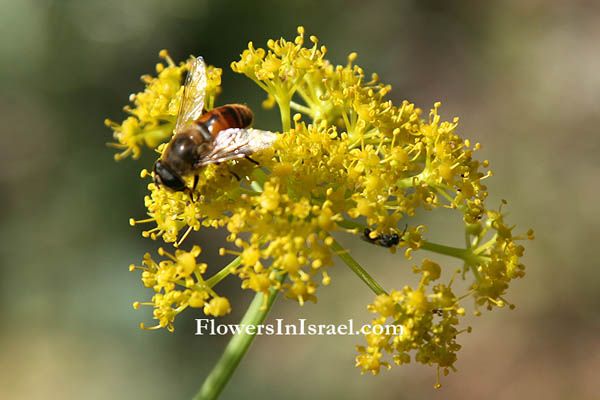
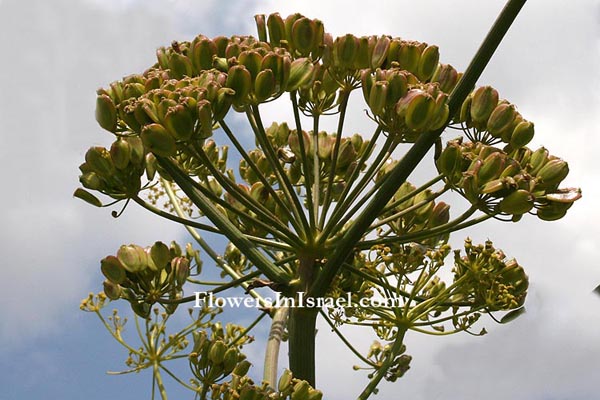
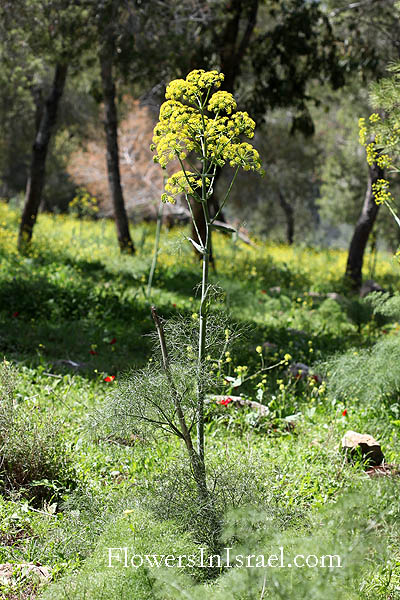
|